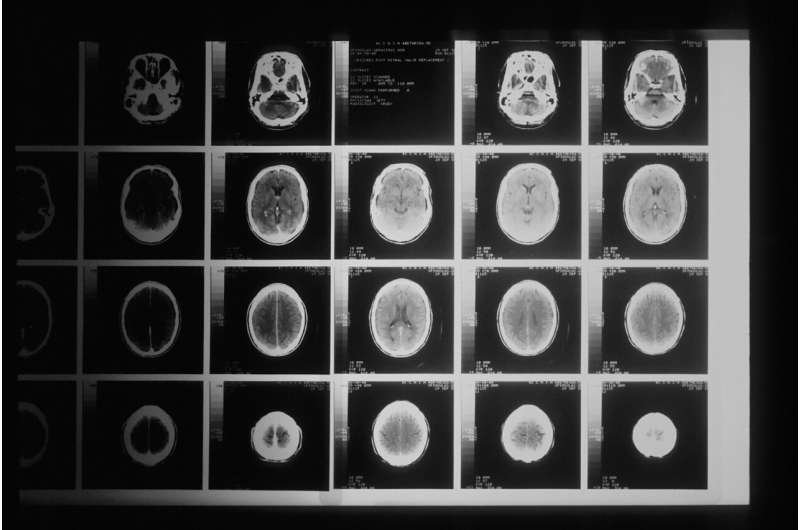Scientists test promising biosensor aimed for use in brain

Scientists have successfully tested in the lab a tiny biosensor they developed that can detect biomarkers tied to traumatic brain injuries.
In a study published recently in the journal Small, the Ohio State University researchers say their waterproof biosensor includes an “unprecedented combination of features” that may allow it to detect changes in the concentrations of various chemicals in the body and send the results to researchers in real time.
The chip is flexible and thinner than a human hair, making it minimally invasive for use in the brain.
“We have a long way to go from our tests in the lab, but these findings were very encouraging,” said study co-author Jinghua Li, assistant professor of materials science and engineering at Ohio State.
Although a biosensor such as the one the team developed could have many potential uses, Li and her co-authors were particularly focused in this study on how the sensor could be used to monitor patients with traumatic brain injuries (TBI).
After such an injury, secondary damage can occur that can be detected by changes in sodium and potassium ion concentrations in the brain’s cerebrospinal fluid, said Li, who is a member of Ohio State’s Chronic Brain Injury (CBI) Program.
“We want a biosensor that is able to continuously monitor brain tissues to detect changes in ion concentrations in the cerebrospinal spinal fluid,” she said.
“Those changes emerge at the secondary state of TBI as an early warning signal of the condition worsening.”
The researchers tested the biosensor in an artificial solution they created to mimic cerebrospinal fluid and found that it could accurately detect changes in potassium and sodium ion levels that are important in TBI.
In addition to the tests with the artificial cerebrospinal fluid, the team also tested the biosensor in human blood serum, in which they successfully monitored pH levels.
How does it work? The chip features electronic components (known as field-effect transistors) that, upon sensing the chemical of interest, produce an electrical signal that can be detected and analyzed outside the body.
Importantly, the researchers developed calibration standards that address what is called the “crosstalk” issue.
“When we create a biochemical sensor, we want to make sure that the device only responds to the specific chemicals we are interested in, and ignores the crosstalk from other biomarkers,” Li said. “That is difficult to do in a complex system like our body.”
While a biosensor has to be able to detect changes in the fluids in the brain, the electronics in the chip must be protected from these same fluids, Li said.
A waterproof encapsulation made from a thin film of silicon dioxide—forged in temperatures above 1,000 degrees Celsius—provided high structural integrity as barrier materials in a fluid environment, the study found.
How long could the encapsulation last in a human body? The researchers tested the material in a variety of ways, such as by placing it in heated fluids and in substances with different pH levels.
The findings suggest the waterproof encapsulation with a thickness of several hundreds of nanometers could last at least a few years at body temperature and possibly much longer, Li said.
The biggest issue right now is with the chemical sensing elements, which the study suggests would work for only up to a few weeks.
And there are other issues that need to be worked out before the biosensor is ready to be tested in animal models and humans, Li said. The response of biotissues to the sensor over extended period needs further study. There are still issues with crosstalk to be resolved, considering the complexity of the biosystem, and questions of how to mass produce the sensors, among other matters.
But this study provides more evidence that these sensors have a real future in health care, she said.
Li said she believes biosensors could be used to analyze not only ions and neurotransmitters, as in this study, but possibly peptides, proteins, nucleotide acids and other chemicals in the body. It could be a breakthrough not only for TBI, but for other chronic diseases such as Parkinson’s and Alzheimer’s disease.
Source: Read Full Article
